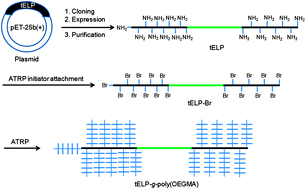In situ growth of a thermoresponsive polymer from a genetically engineered elastin-like polypeptide†
Abstract
We report the in situgrowth of a thermoresponsive dumbbell-like

- This article is part of the themed collection: Polymer Bioconjugates

 Please wait while we load your content...
Please wait while we load your content...